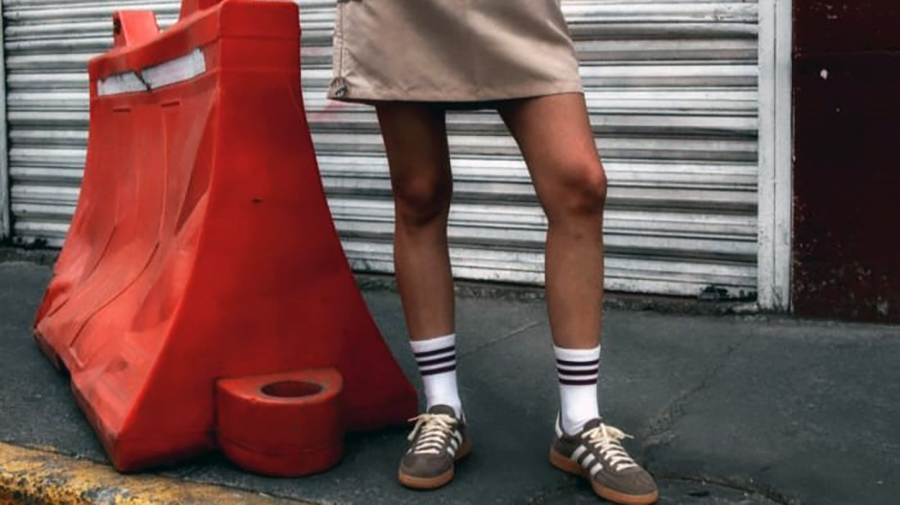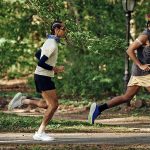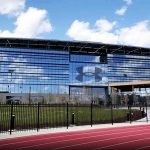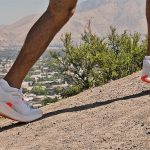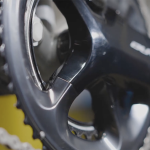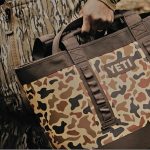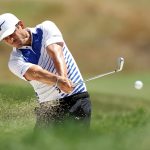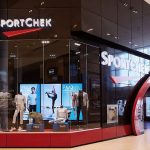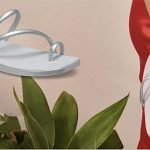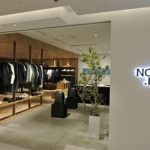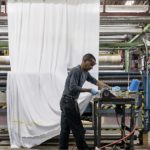Adidas Group reported underlying sales in North America increased 2 percent on a currency-neutral (c-n) basis in the second quarter and are expected to grow in the second half as well. However, CEO Bjørn Gulden told analysts Adidas still has to focus on being “more American in America” to accelerate gains in the region further.
He said the first step has been improving relationships with North American retailers.
“It means working very closely with American retailers as a partner,” said Gulden. “That means having a pipeline of product that is meant to sell in the U.S. and not product that was decided in Germany that you should sell.”
He said one major benefit of hiring John Miller as president of North America this past January is that Miller is from the U.S. He said, “Our relationship with American retailers with new management who are Americans is improving every week we speak.”
Miller most recently worked at Puma as the SVP of wholesale. He has also worked for Adidas in sales leadership roles, with stops at Nike, G-Form, and Salomon.
Gulden also stressed that success in the North American region must be about “showing up in American sports.” He cited the importance of “being visible” in baseball, basketball, American football and “to a certain degree” golf as critical to gaining mind share in the region. Gulden added, “You need to showcase that you are in high school and college sports. And that is, of course, easier when you have an American president in Adidas than having a foreigner.”
He cited signing a sponsorship deal with Texas Tech to support its positioning around American football as an example of future investments in the region. Gulden said, “The new team in America is investing more in American sports. And, I think you will see that over the next months and quarters, the visibility will go up.”
Gulden said basketball is “probably the most difficult category for a European brand to be successful in.” However, he added that the brand now has three basketball franchises “working,” citing success with Anthony Edwards’ AE 1 Low, James Harden’s Harden Vol. 8 and D.O.N. Issue 6. The CEO said, “That means that for the first time in a long, long time, we have sell-through with our retail partners that they appreciate. And I can promise you that investments in basketball, both from product development and the visibility with players, are increasing.”
Gulden noted that part of the string of quarterly declines in the North American region on an underlying basis is because the marketplace has been over-invented over the last 18 months due to pandemic-related disruptions that caused the industry to overbuy.
Gulden said the excess inventories led to discounting that many other brands absorbed. However, he said Adidas faced more significant challenges selling through inventory because the product saw weak demand. Gulden said, “We were sitting on inventory in the trade that was not selling great. And of course, when you’re not selling great, they won’t buy a lot, and they also discount you, which is not good for your brand image. I think we’ve worked through that very, very good. We have reduced our inventory in the U.S., both at retail and in our own inventory.”
Global inventories at the quarter’s close were down 17 percent on a c-n basis, with declines across regions, including the U.S.
On the positive side, over the years, Adidas has established a firm foothold and awareness in North America. He said, “It’s obvious that we have a history in America, both sports and sports culture, but also street culture, when you go back, that is very strong.
However, he acknowledged that Adidas faces tough competition in the region, calling out Nike’s dominant market position. “If we play to the lifestyle, the comfort and the performance side, I think we can be a very, very strong brand in the American market,” said Gulden. “Knowing that, of course, our strongest competitor has a market position that is very, very strong and full respect to what they have done. But we are confident that we have tools to be much stronger in the U.S. than we currently are.”
Adidas Raises Guidance As Second Quarter Exceeds Plans
Companywide, Adidas’ results aligned with a forecast given on July 16, when Adidas raised its guidance for the year for the second consecutive quarter.
Currency-neutral revenues, including Yeezy, increased 11 percent compared to the prior-year quarter. The underlying Adidas business grew 16 percent. The sale of parts of the remaining Yeezy inventory generated revenues of around €200 million in the quarter, which was significantly below the €400 million in Yeezy sales generated in the prior year.
Gulden told analysts that Adidas’s 16 percent underlying growth was “way above what we thought it would be. And it’s a combination, of course, of a great sell-through and also that retail is again showing great interest in our brand and products.”
In euro terms, total revenues grew 9 percent to €5.82 billion, as currency developments led to an unfavorable translation impact.
Channel Highlights
The underlying top-line momentum, from a Channel perspective, reportedly broadened during the second quarter.
- Wholesale grew 17 percent on a currency-neutral basis to €3.42 billion in the second quarter.
- Direct-to-consumer (DTC) revenues grew 4 percent (c-n) to €2.39 billion. Excluding Yeezy, the company’s DTC business grew 21 percent.
- Growth in Adidas’ owned retail stores further accelerated (+15 percent c-n), driven by strong sell-through in the company’s concept stores.
- E‑commerce revenues declined 6 percent in the quarter in currency-neutral terms because of the significantly smaller Yeezy business. Excluding Yeezy, revenues in e-commerce were up more than 30 percent in Q2.
Category Review
Footwear continued to lead top-line growth with a strong product offering. Revenues reportedly increased 17 percent on a currency-neutral basis during the quarter and grew 15 percent in reported terms to €3.57 billion. The company said the “strong product offering” in Originals and Football (Soccer) translated into strong double-digit growth in those categories. In addition, increases in Running, Training, Performance Basketball, and Sportswear also reportedly contributed to the company’s top-line increase in footwear.
Apparel sales were up 6 percent on a currency-neutral in Q2, driven by strong double-digit growth in Football (Soccer), which was helped by major events during the period. Jersey sales related to the UEFA EURO 2024 and the Conmebol Copa América drove the increase as Adidas teams Spain and Argentina won their tournaments. The company reported that in other categories, the improvement in momentum in apparel continued to be offset by a relatively conservative sell-in approach, particularly in North America.
In reported euro terms, Apparel sales grew 3 percent to €1.89 billion. Accessories declined 8 percent currency-neutral during the quarter, reflecting a 9 percent decrease in euro terms to €370 million, tempered by currency fluctuations.
Segment Review
Lifestyle revenues increased by double-digits during the quarter. The company continued to drive newness and depth across its popular Samba, Gazelle, Spezial, and Campus products. In addition, Adidas also experienced increasing demand for Retro Running. By launching further franchises in Sportswear, the company started to serve consumer needs across a broader range of price points. Collaborations with partners such as JJJJound, Edison Chen, Wales Bonner, and Bad Bunny (a.k.a. Xochitl Gomez) continued to fuel demand for the company’s overall Lifestyle offering.
Performance also posted double-digit growth, led by Football (Soccer). In addition to successful jersey sales, the company recorded a “strong uptake” of its footwear franchises. The latest iterations of Predator and Copa and the newly launched F50 franchise were said to benefit “strongly” from on-pitch visibility during the two major football events.
Growth also accelerated in other major Performance categories.
Adidas continued to benefit from strong demand for its Adizero family in the running category and started to tap into the broader market with its new Supernova and Adistar franchises. In addition, the successful launch of the Dropset 3 drove growth in Training. In Performance Basketball, Anthony Edwards’ AE 1, the Harden Vol. 8, and Donovan Mitchell’s D.O.N. Issue 6 experienced strong sell-throughs and drove brand awareness.
Regional Revenue Highlights
Outside North America, Adidas reported strong double-digit growth in Europe, Emerging Markets and Latin America in the second quarter.
- In Europe, currency-neutral sales increased 19 percent during the quarter and increased 20 percent in reported euro terms to €1.91 billion in the period.
- Greater China revenues increased 9 percent in currency-neutral terms in Q2, reflecting a 7 percent increase in reported euro terms to €822 million and an upside from currency translation.
- Emerging Markets revenues increased 25 percent in currency-neutral terms in Q2, posting reported growth of 25 percent in euro terms to €747 million.
- Latin America also grew 33 percent currency-neutral but just 13 percent in reported euro terms to €673 million.
- Japan/South Korea revenues were up 6 percent in currency-neutral terms. In reported euro terms, sales declined to €321 million.
Income Statement Highlights
The company’s second-quarter gross margin reached 50.8 percent of net sales, a ten basis point decline year-over-year from 50.9 percent in Q2 2023. The significantly smaller Yeezy business reportedly hurt the year-over-year comparison. Excluding Yeezy, Adidas’ gross margin increased approximately 1.5 percentage points to around 50.5 percent during the quarter, compared to roughly 49.0 percent in Q2 2023, despite adverse currency effects still weighing strongly on the growth. The improvement reflected “better sell-throughs, lower freight and product costs, reduced discounting, and a more favorable product mix.”
Other operating expenses increased by 2 percent to €2.64 billion in the quarter. As a percentage of sales, they decreased 3.0 percentage points year-over-year to 45.3 percent of net sales.
- Marketing and point-of-sales expenses were up 15 percent to €707 million in the quarter (2023: €617 million). The increase reflected continued investments in the global brand campaign “You Got This,” large-scale activations surrounding sports events, including Euro 2024 and Copa América, and new product launches. As a percentage of sales, marketing and point-of-sale expenses were up 0.6 percentage points to 12.1 percent (2023: 11.5 percent).
- Operating overhead expenses decreased 2 percent to €1.93 billion (2023: €1.97 billion) despite ongoing investments to strengthen the company’s sales activities. The decline was supported by non-recurring expenses recorded in the prior year period, which related to accruals for donations and strategic measures. As a percentage of sales, operating overhead expenses decreased 3.6 percentage points to 33.2 percent (2023: 36.8 percent).
Operating profit amounted to €346 million, nearly double the €176 million level in the second quarter of 2023, reflecting an operating margin of 5.9 percent (2023: 3.3 percent). The sale of parts of the remaining Yeezy inventory contributed around €50 million to the company’s operating profit in the second quarter. This compares to a profit contribution from Yeezy of around €150 million in the prior-year period.
Net income from continuing operations amounted to €211 million, more than double the €96 million in net income in the year-ago period, while basic EPS from continuing operations increased to €1.09 in Q2 from €0.48 in the year-ago quarter.
Guidance
On July 16, Adidas increased its full-year guidance following the better-than-expected second-quarter performance and continued momentum. Adidas is now forecasting currency-neutral revenues to grow at a high-single-digit rate in 2024, up from the previous April 2024 guidance for mid- to high-single-digit growth. Operating profit is now expected to reach around €1.0 billion, up from the April forecast that called for full-year operating profit of around €700 million.
Gulden cautioned analysts not to expect Adidas’s 16 percent underlying growth in the second quarter to accelerate to 25 percent growth in the quarters ahead because Adidas is now seeing demand outpace supply due to healthy sell-throughs. However, Gulden said the turnaround efforts are running ahead of plan. “We all know we have a lot of work to do in front of us to be healthy and very good Adidas, but I’m convinced we can bring Adidas back again to where we used to be and be a very, very good company for the future and the best sports brand that exists,” said the CEO.
Image courtesy Adidas

